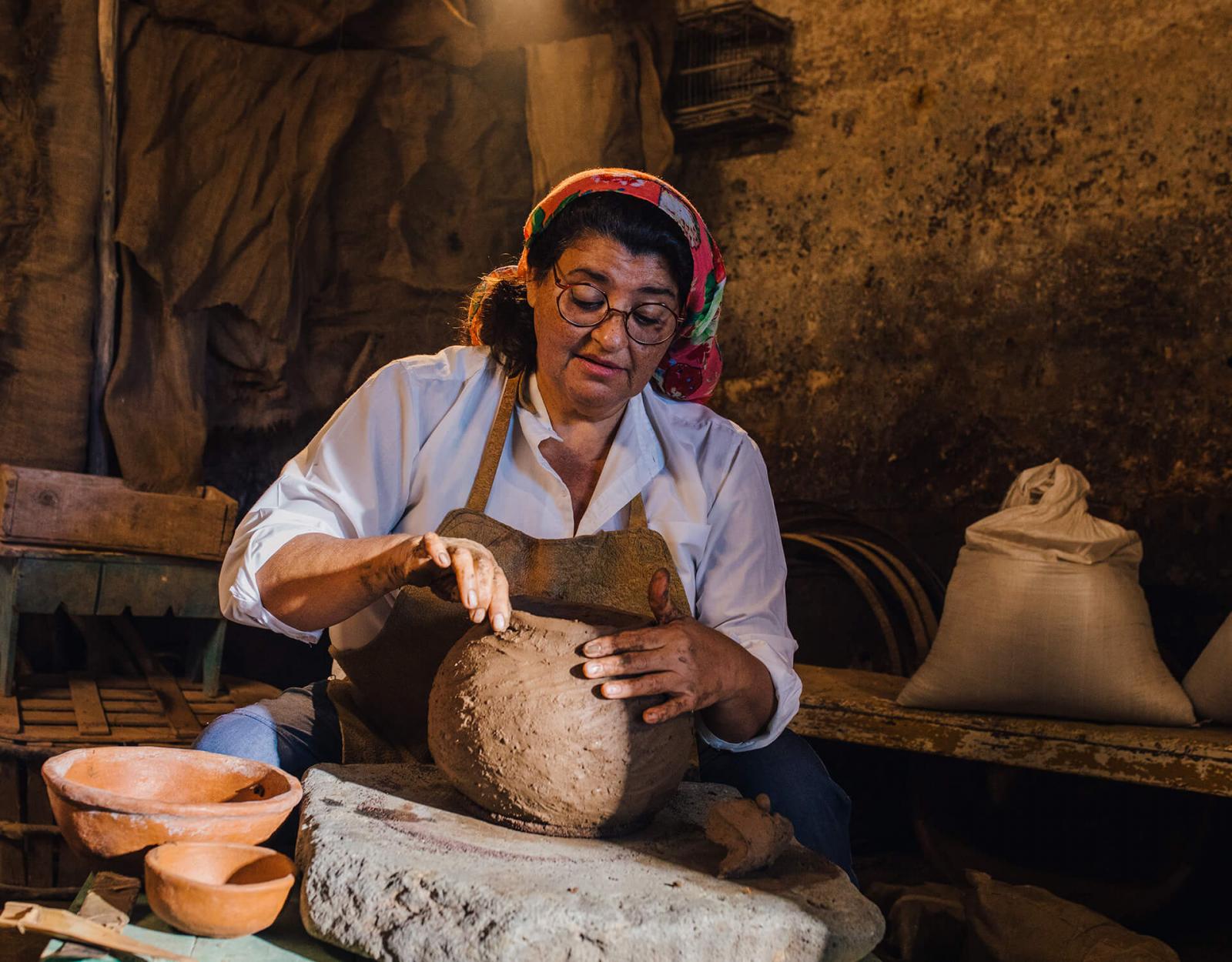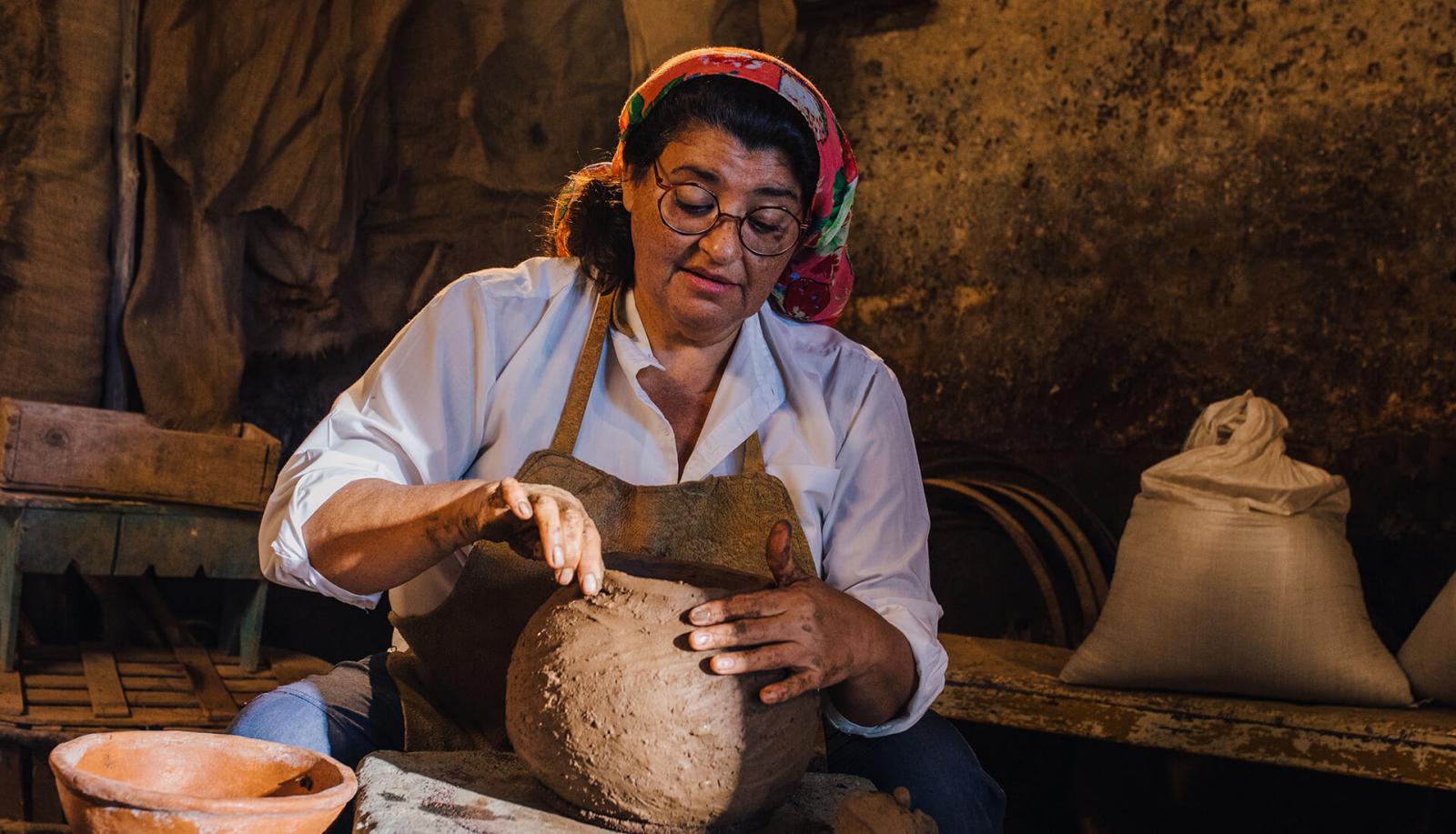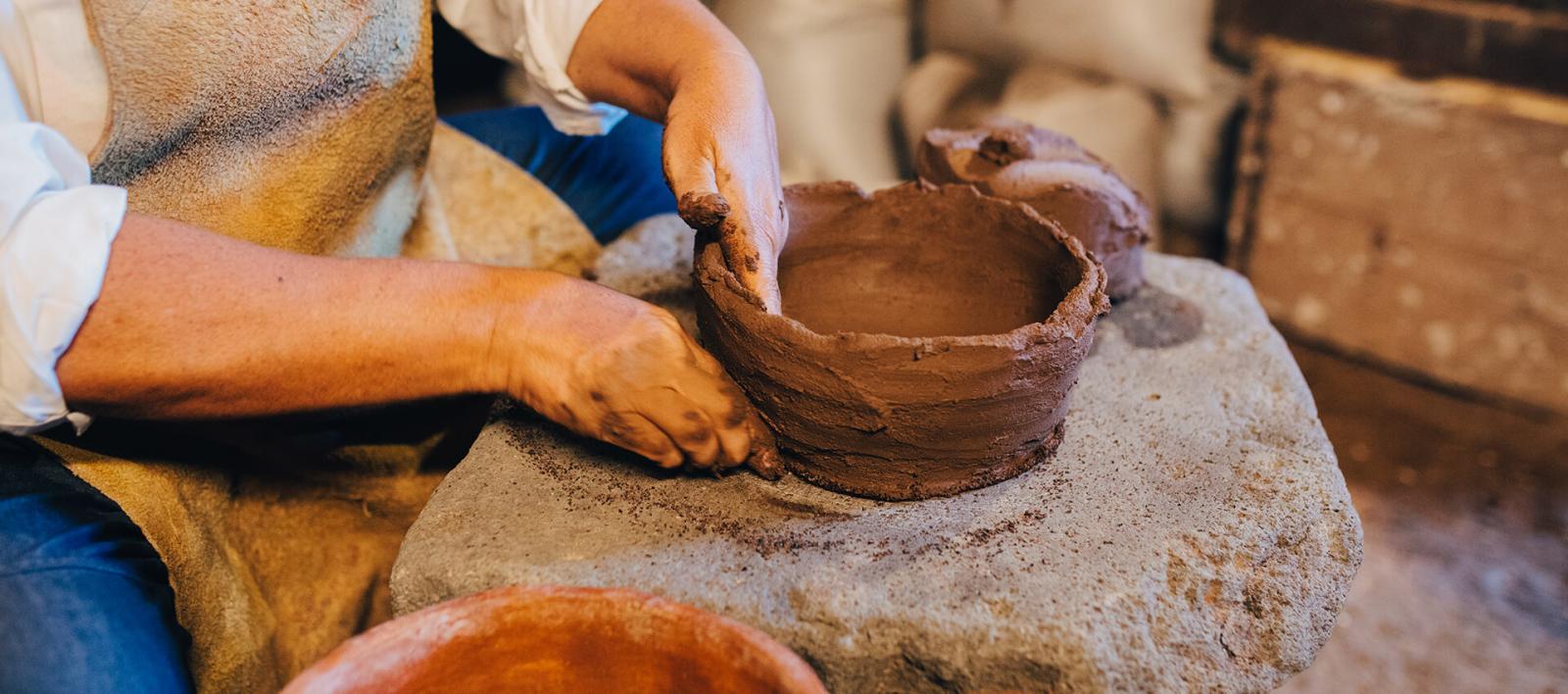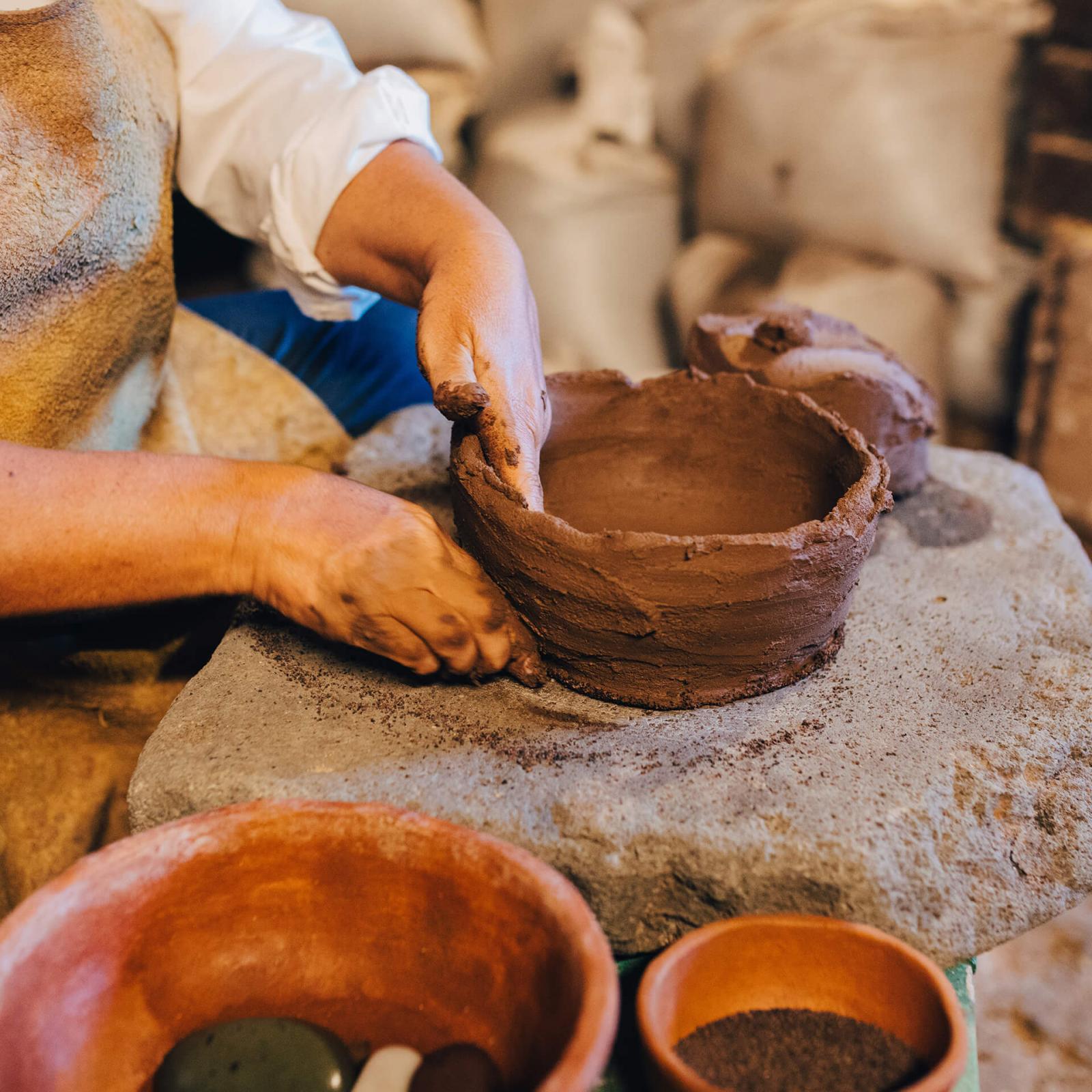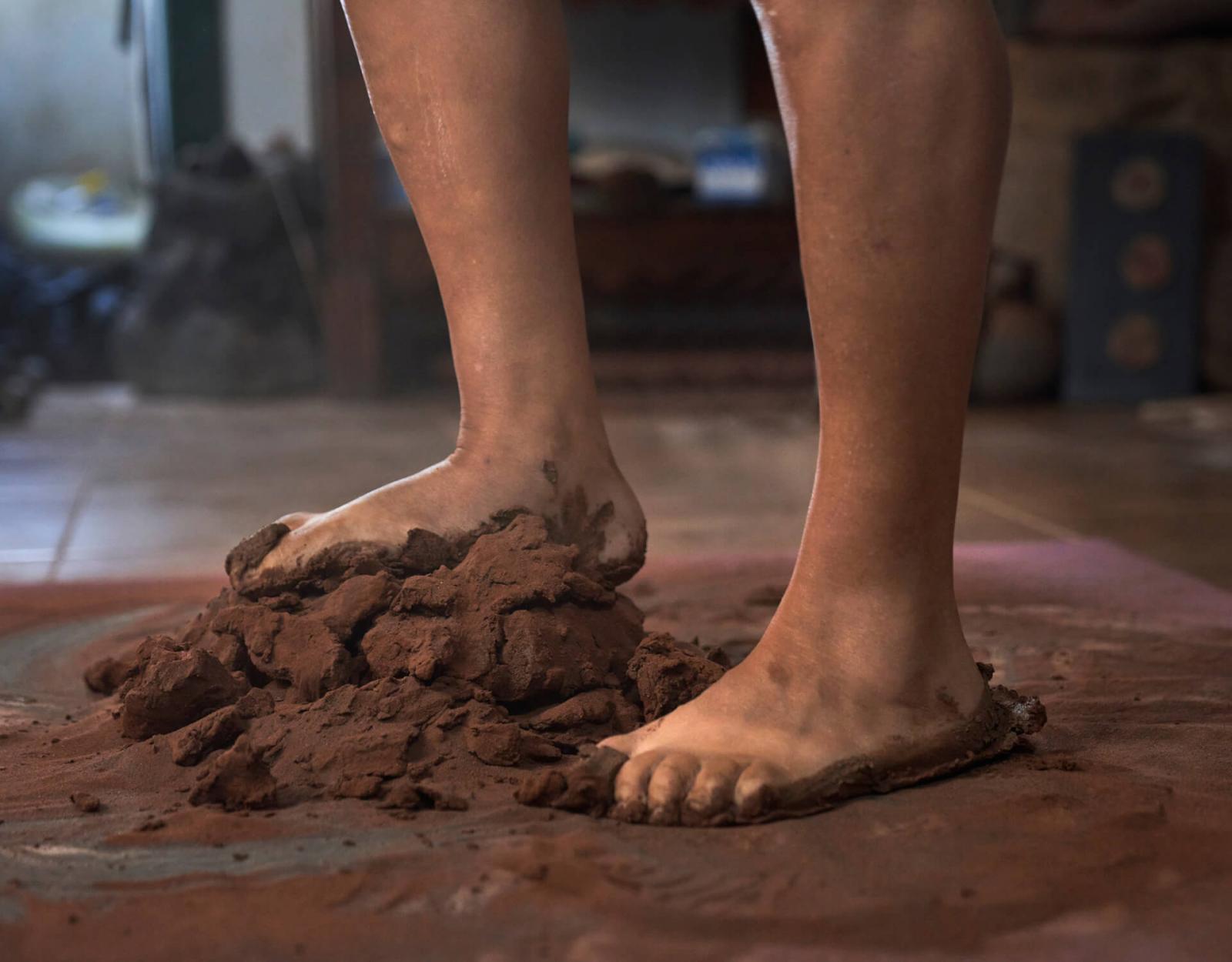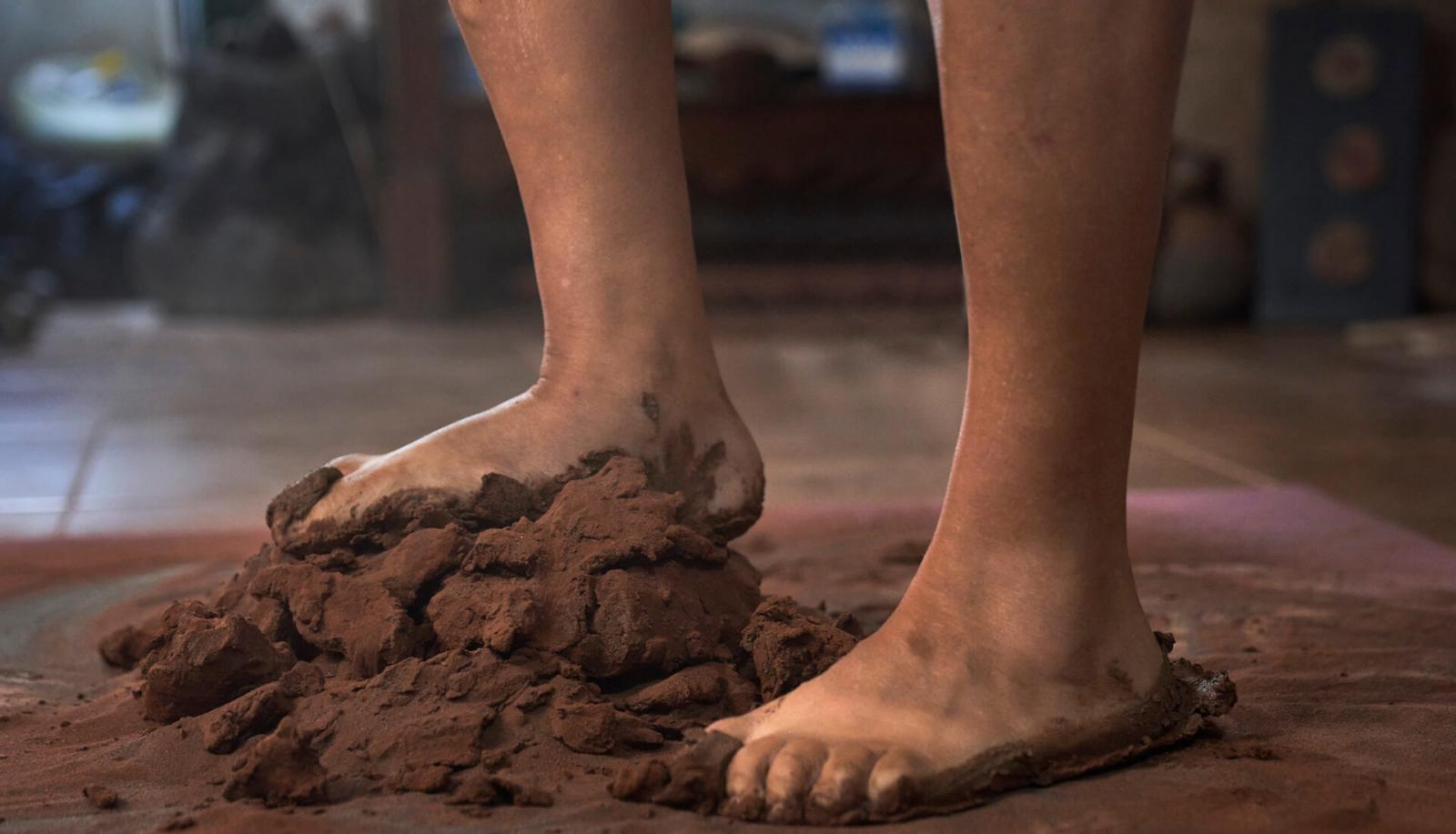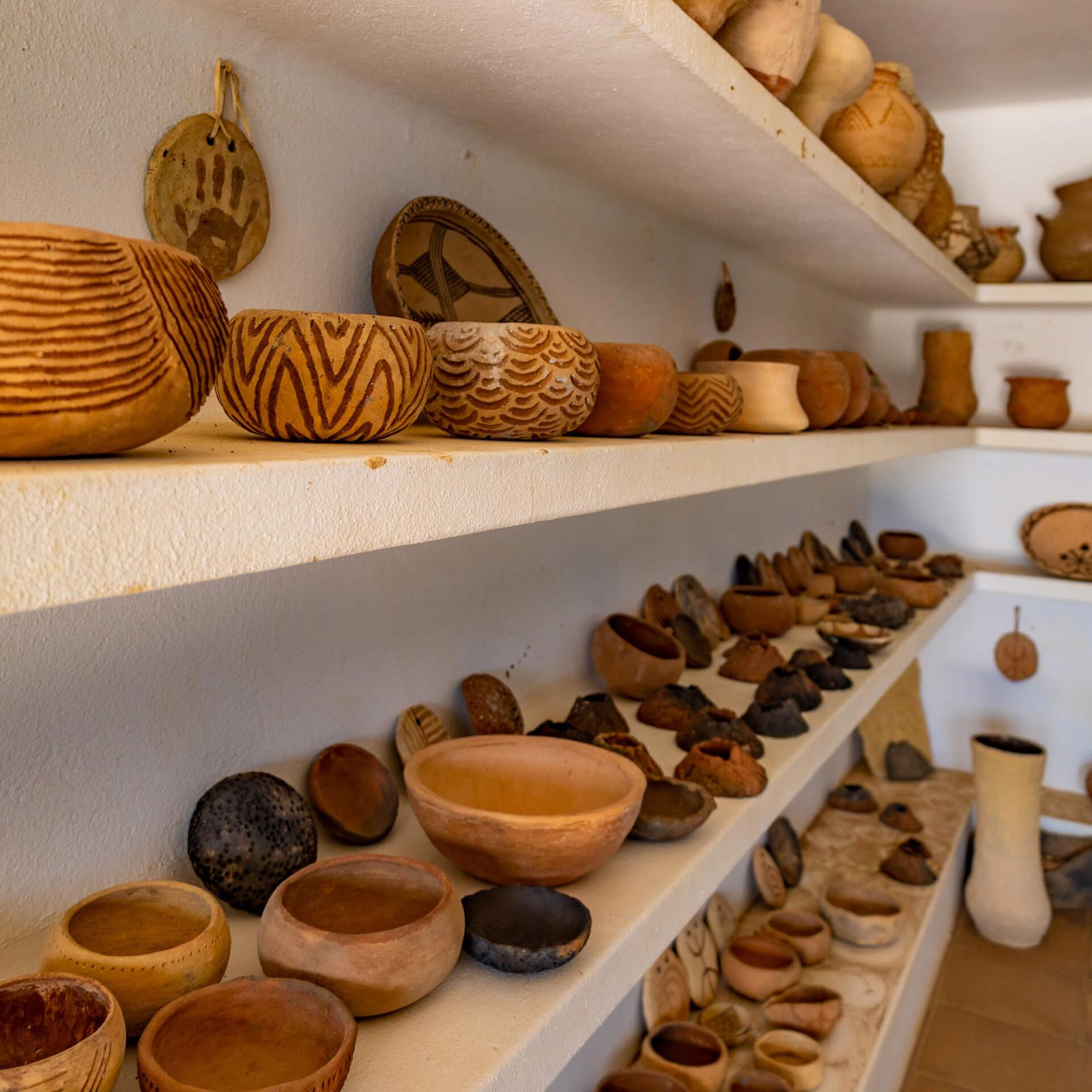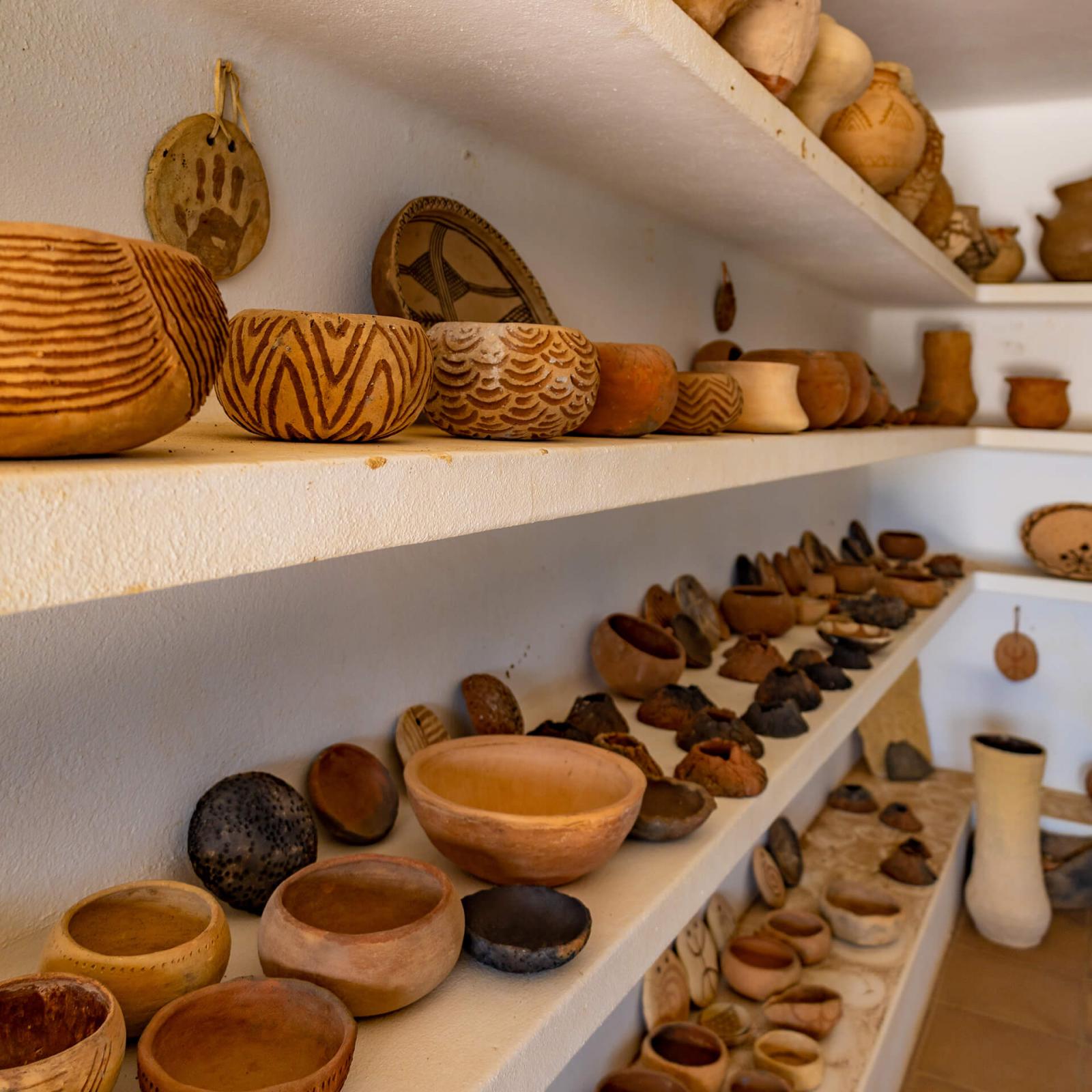The first settlers of the Canary Islands made ceramic pieces using techniques that have been passed down to us through the ages. The most curious feature is that even today, this pottery is made without a wheel, using the same technique as that employed by the indigenous people: urdido, a method consisting of modelling using rolls or “churros”. The pieces, with a multitude of shapes depending on the uses, are made using clay from volcanic soils. Discovering the ceramics, and even taking part in the courses organised by the potters in their workshops, is a wonderful experience for connecting to the essence of the Canary Islands.
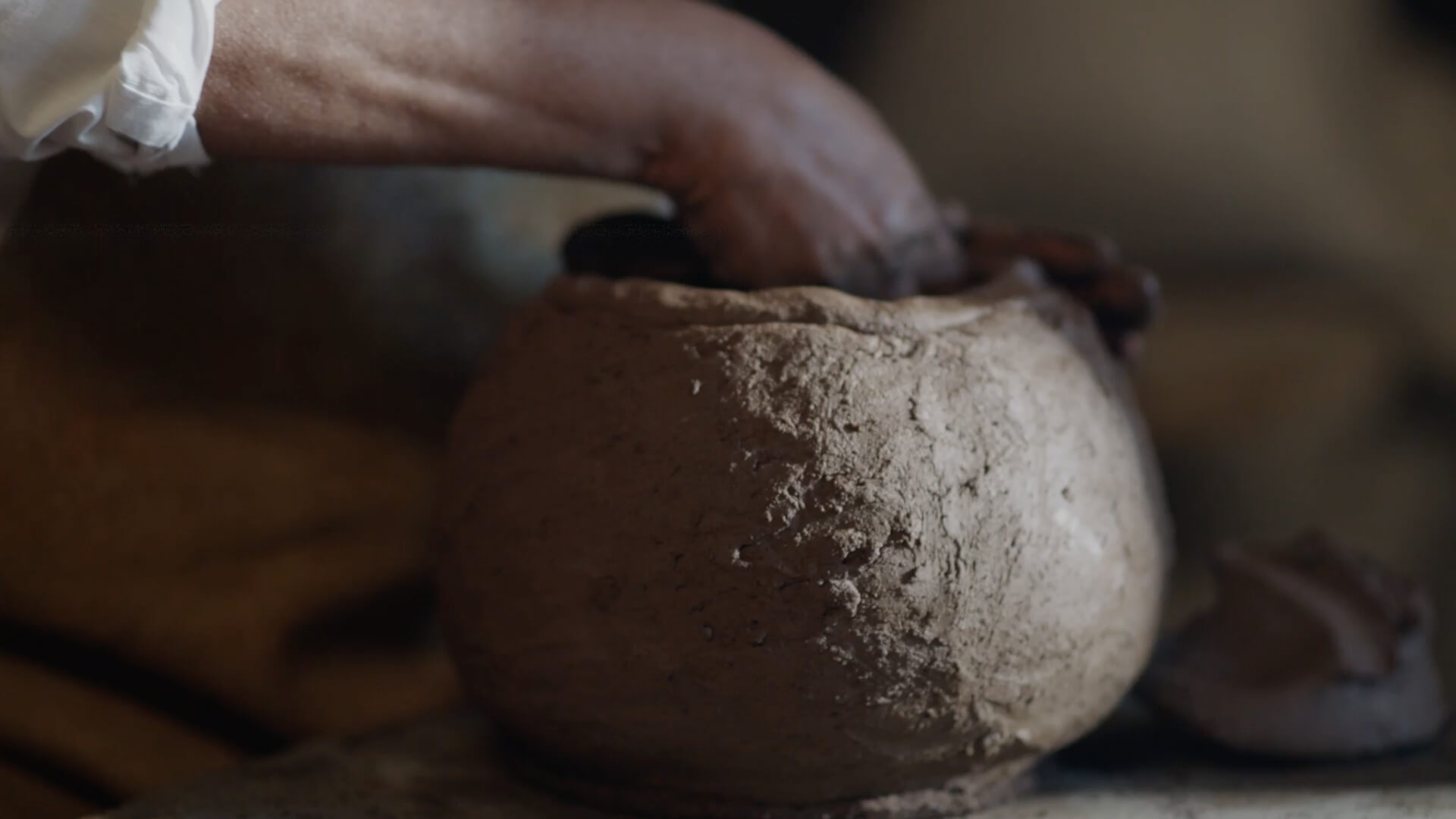

The first clay items
The traditional pottery of the Canary Islands gives rise to a wide variety of clay items that are still made in the same was as they were by the indigenous people, around two thousand years ago.
The first inhabitants of the archipelago did not use a wheel or a kiln in this trade: they made the pieces by hand, employing the urdido method, a form of modelling with rolls or “churros” of clay which are coiled around on top of each other to shape the sides. They usually decorated them with red ochre or incisions, and in some cases even with extremely accurate lunar and solar calendars, like those found in sites on Fuerteventura and La Palma.
Loza and guisaderos
Using the same technique, but simpler and with hardly any decoration at all, popular pottery, the heir to the indigenous ceramics, still works with the same material but with a technological innovation after the Castilian conquest: the use of a kiln to fire the loza. This was the name given on the islands to the pottery items that had acquired consistency after being fired. And in the same way, the traditional potters were called loceras. This work was performed mostly by women in the past, while the men would go to fetch the clay and the sand from the ravines, as well as the wood to make the fire were the pots would be baked.

Lugarejos, a cave village with pre-hispanic origins in the north-west of Gran Canaria, is the only place where open-air firing of pottery, without a kiln, still takes place. It is done in what is known as a guisadero, following the purest indigenous pottery tradition: a powerful fire is started with pinocha (pine needles) and cones from the Canary Island pines under the raw pottery pieces, and culminates when they are covered with wood from bushes like the curly rockrose and many, many more pine needles, creating the big final blaze that generates the temperature needed to fire the clay.
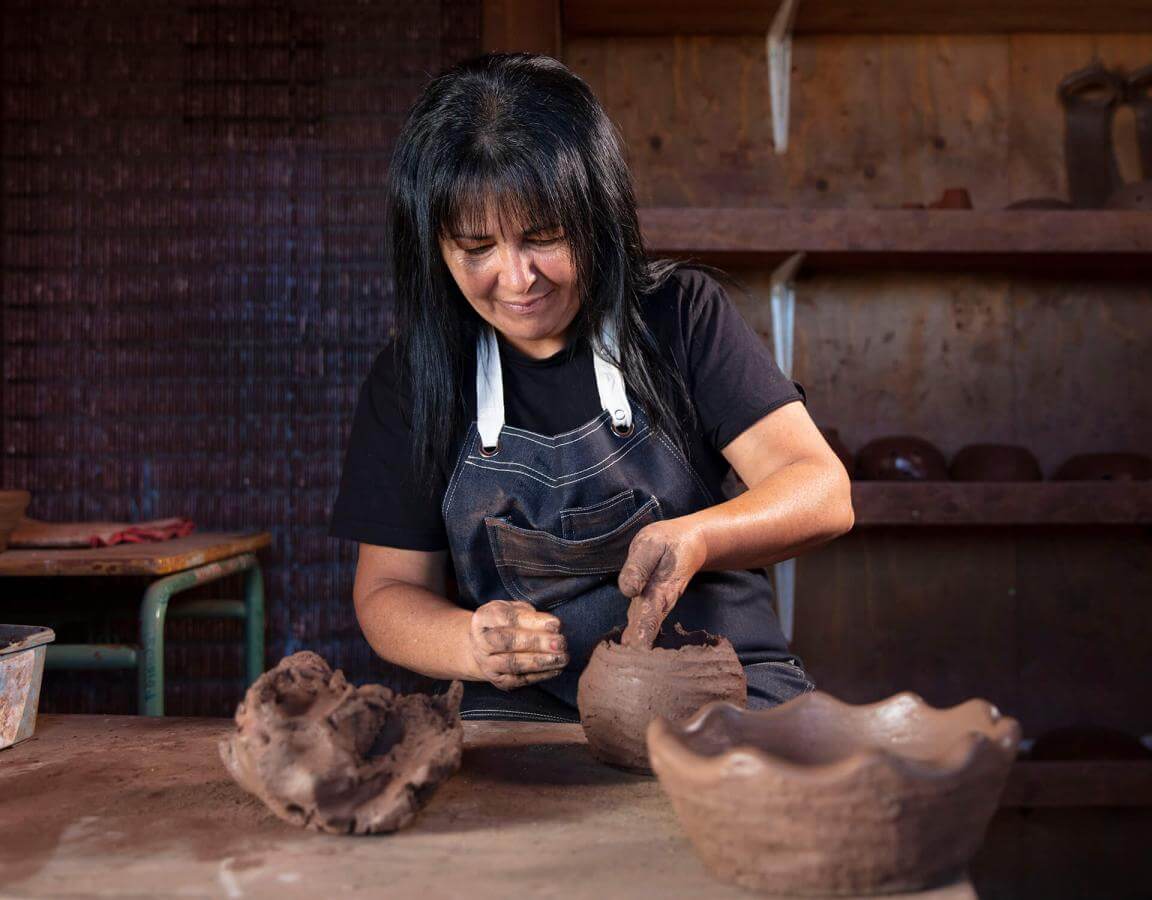
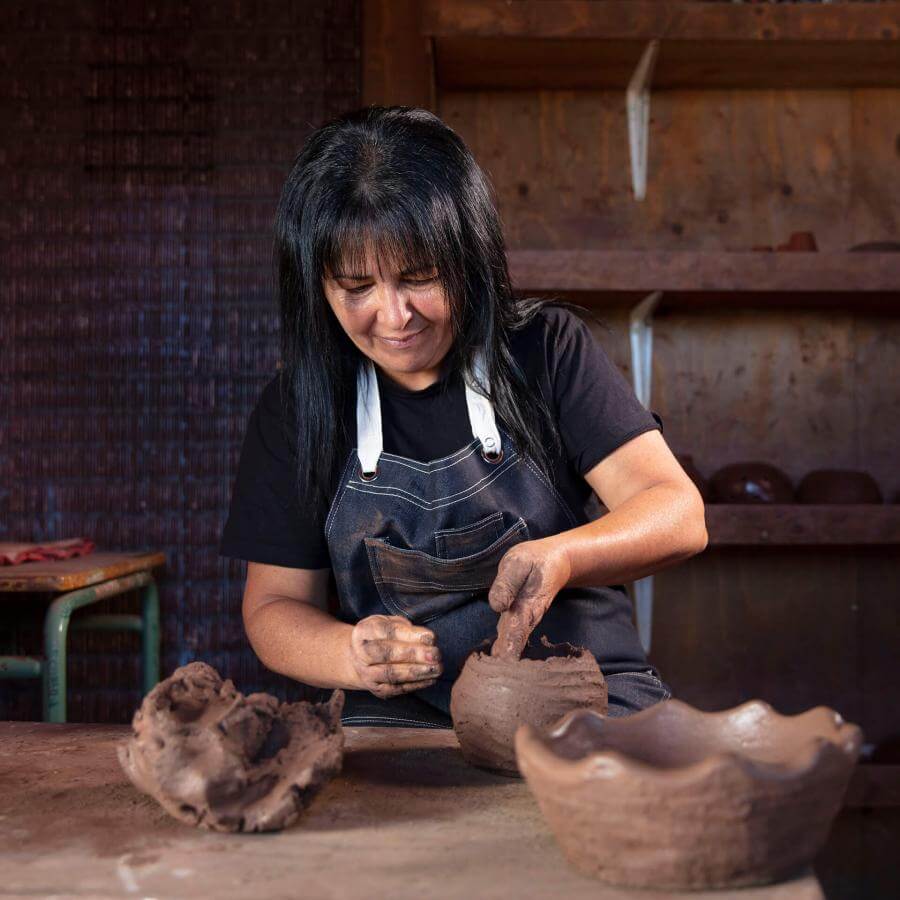
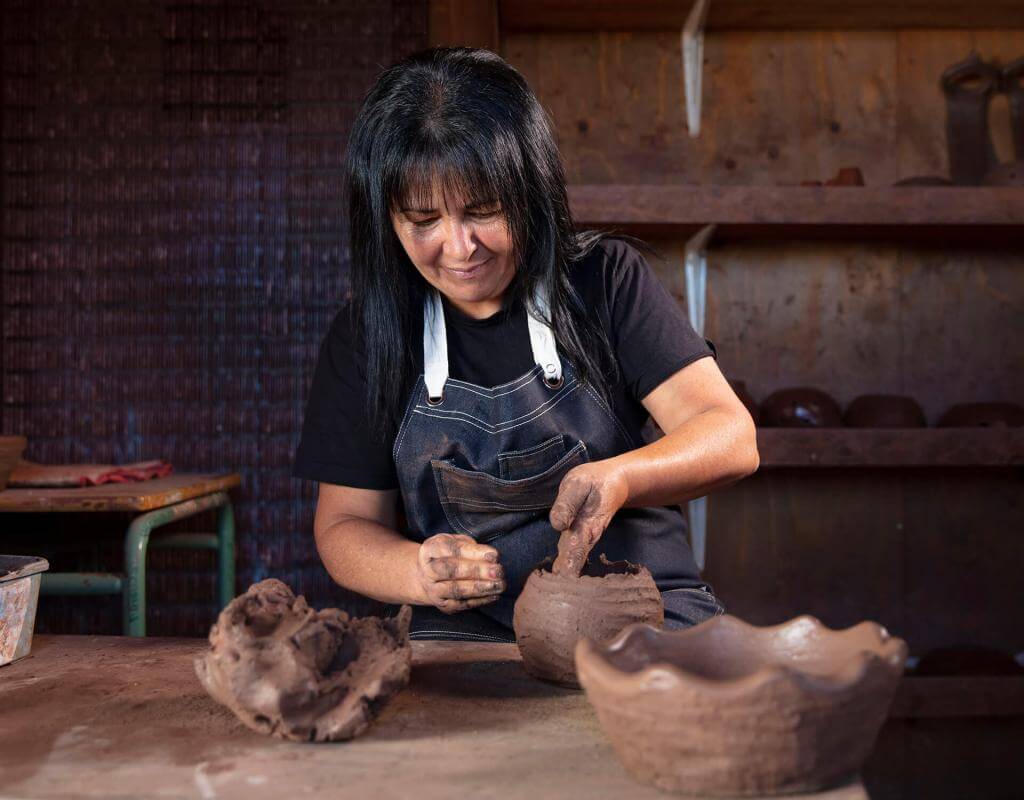

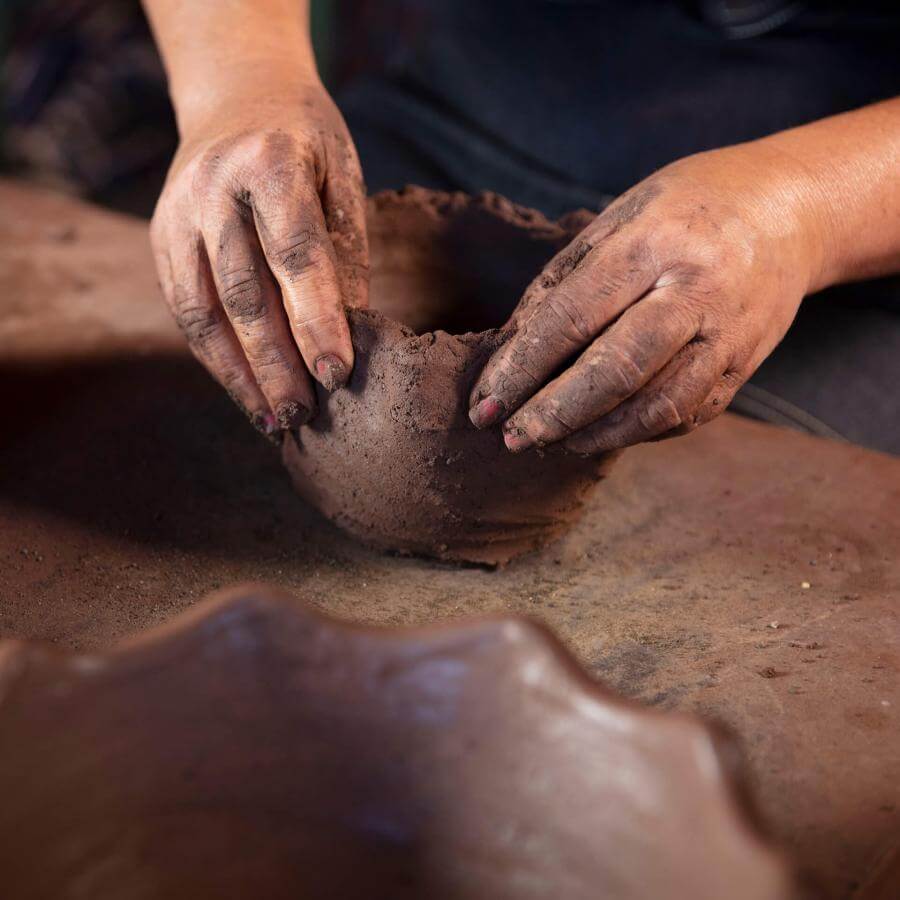
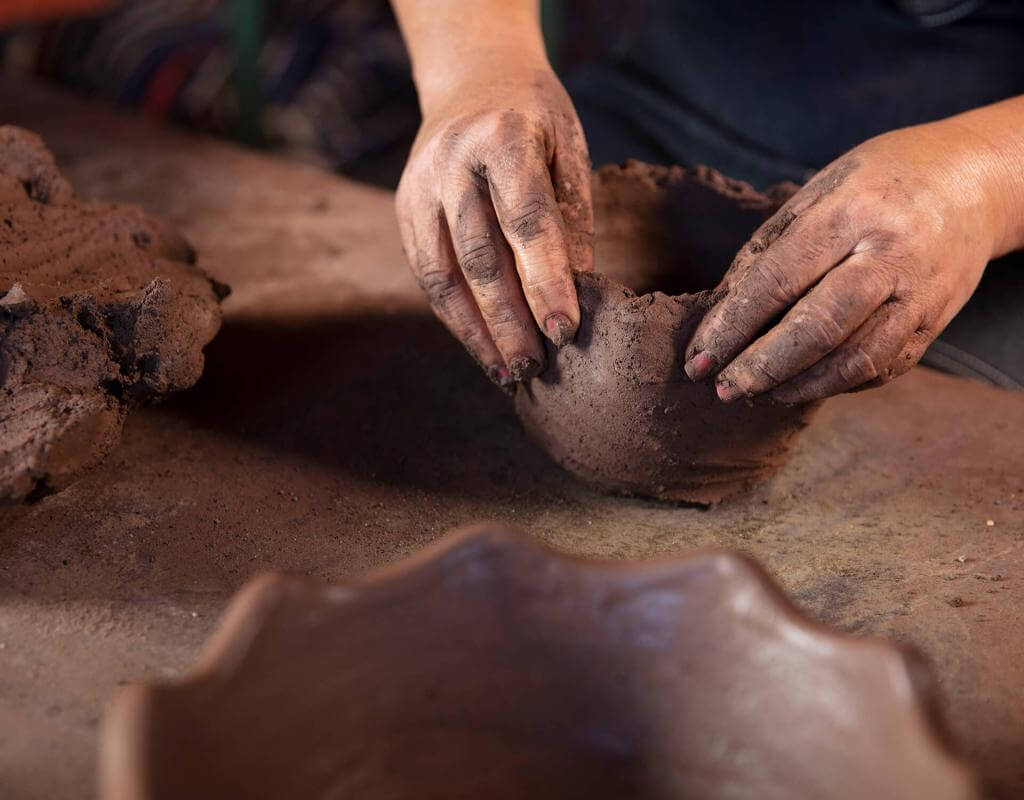
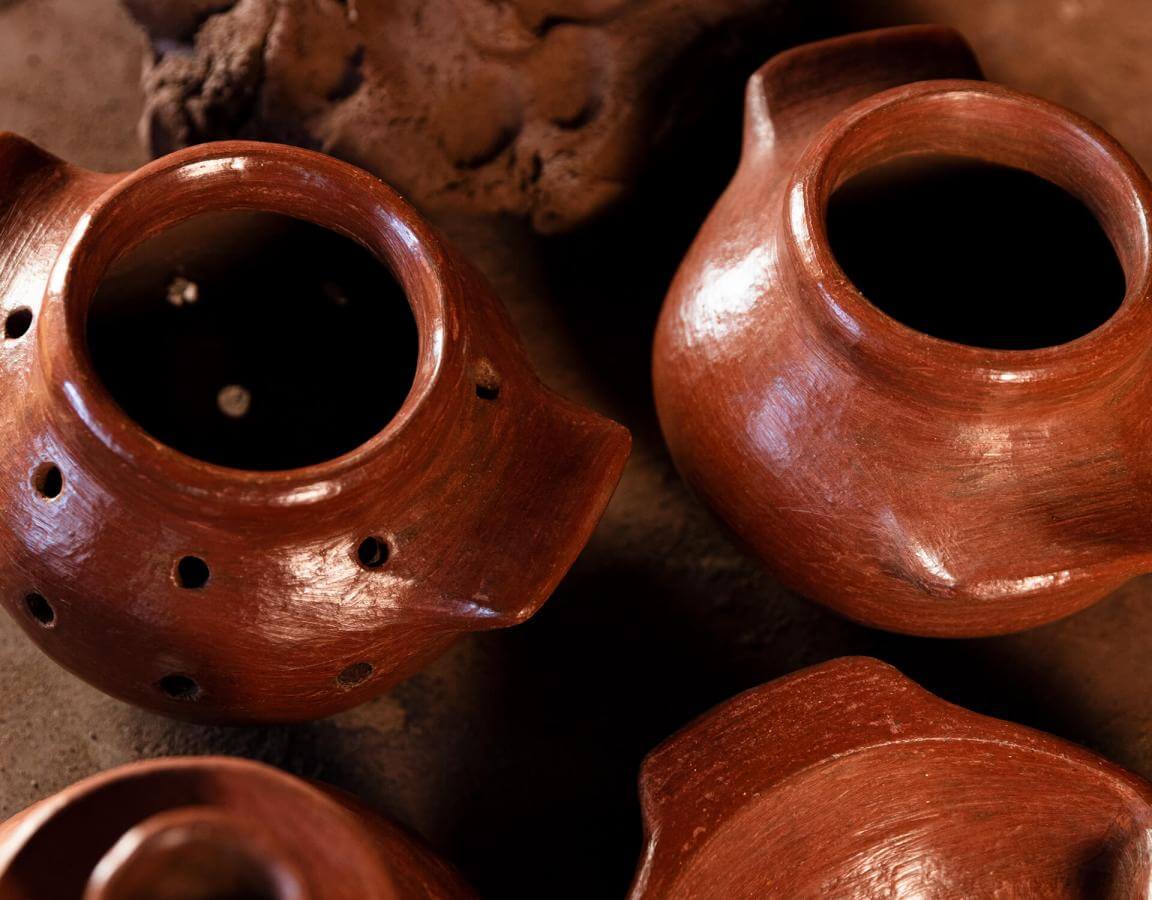
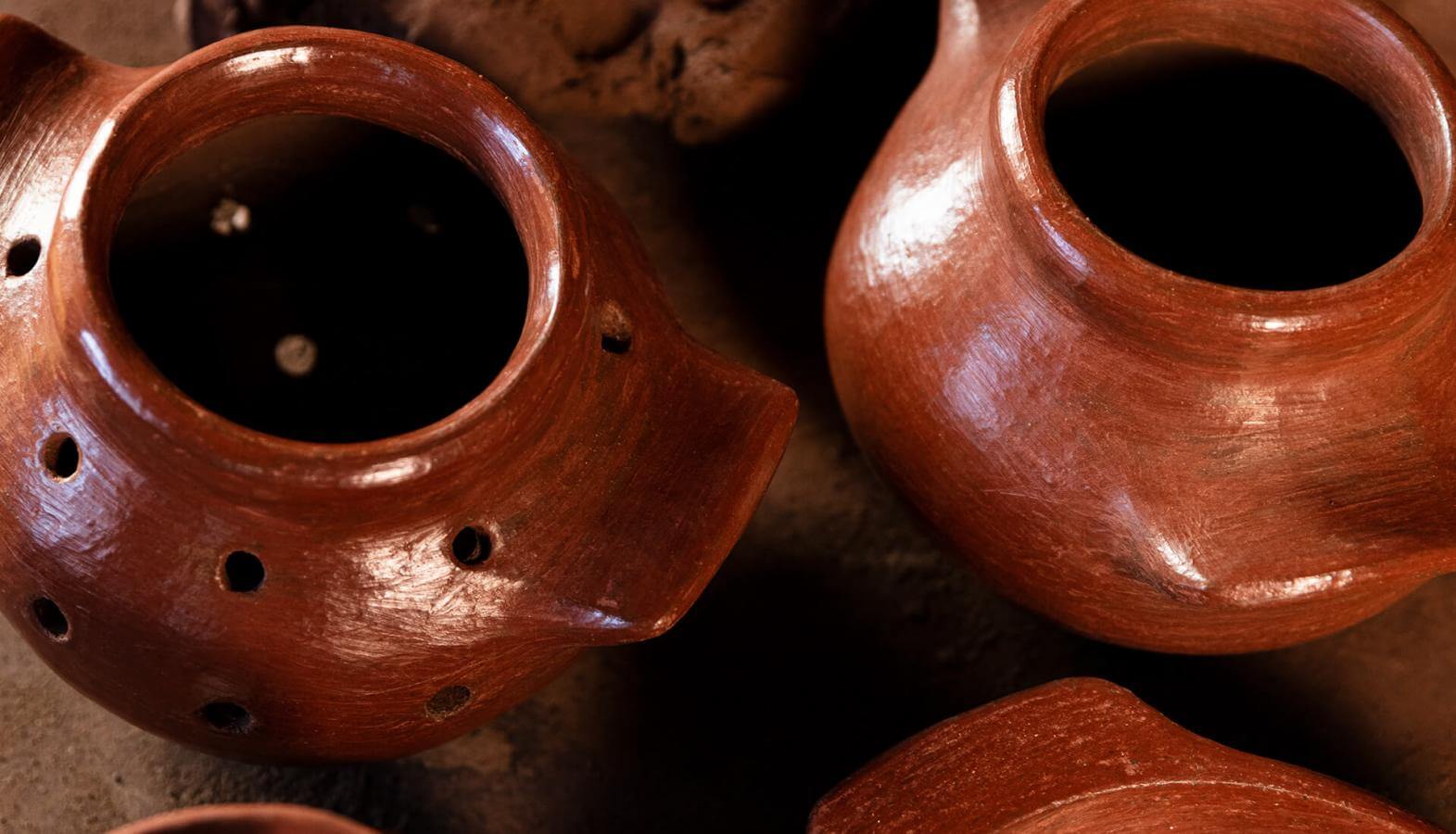
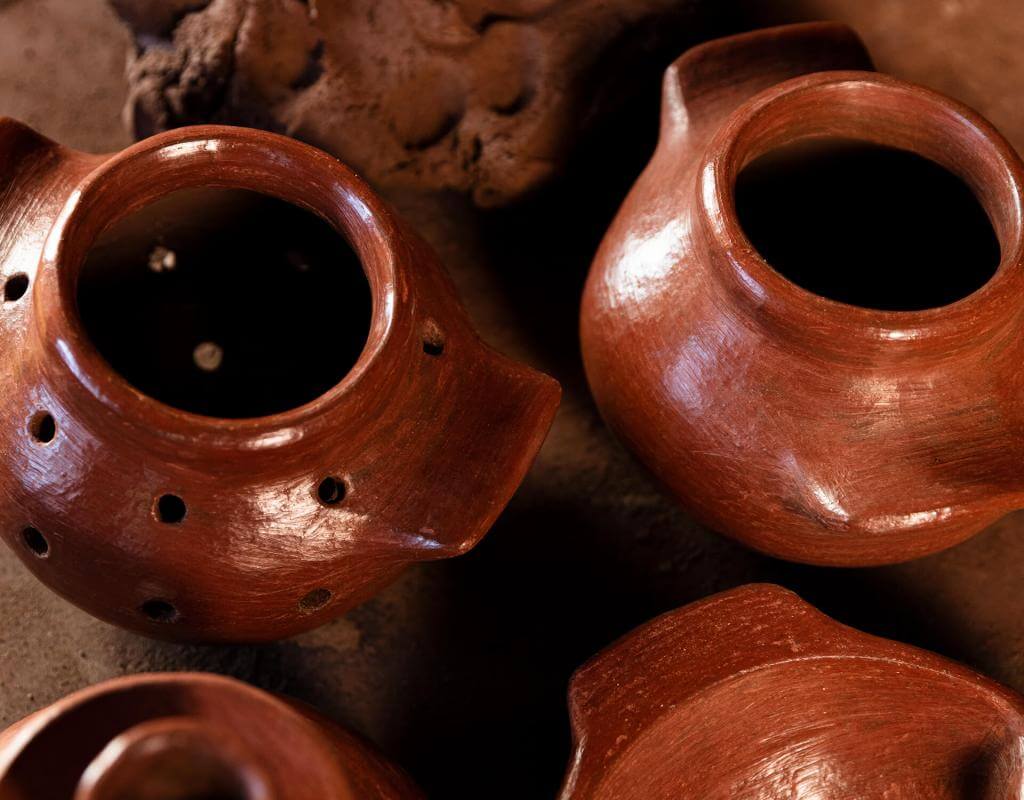
From the seam to the “churros”
The trade of potter or traditional Canarian ceramicist involves a very laborious process for working with the clay. You have to go to the seam to dig up the clay, pound it, sift it and dampen it to make it mouldable. You then have to knead it and add ravine sand to it, before shaping it.
Then the clay is wedged by hand and the piece is shaped using the ancient technique of the indigenous people: first, a flat base is made, followed by long “churros” (rolls, or cylinders), which are joined together to shape and make each piece taller, whilst thinning and flattening it with a pebble, after which it is coloured with red ochre.
Uses and names
The traditional style of Canarian pottery – the heir to the indigenous pots known as gánigos – is as varied as the different domestic and agricultural uses to which it was put. Nowadays, many of these uses have disappeared, so the utility of these pieces is less functional. Some of them have kept their indigenous names, like the tofio, a container that was used when milking animals.
Tallas, bernegales and porrones are all vessels used to transport or store liquids, in particular water, although there are also jugs for milk and cazuelos for wine. For the home, there is no shortage of plates, candle holders, censers, chamber pots, flowerpots and even toys, which were usually small figures representing domestic animals or everyday pottery items in miniature.
From cooking to decoration
Without doubt, the most abundant of the whole range of possible pottery items are those used to store or cook food: pots for milk, casserole dishes for preparing food, toasters for gofio cereal or coffee, coffee pots, bowls for kneading bread or stuffing blood puddings, basins for washing up crockery and large jars where salted meat was stored.
Today’s kitchens no longer use wood for the fire, and hardly any earthenware containers are used for cooking. But many of the traditional designs live on as decorative elements, because of the beauty of their designs: the plates are still used to decorate walls, the bowls as fruit bowls, the pots to hold flowers in, the flowerpots for house plants and goblets as pencil holders. Not to forget the new designs that craftspeople devise using the ancient technique to meet current needs, such as lamps, for example.




